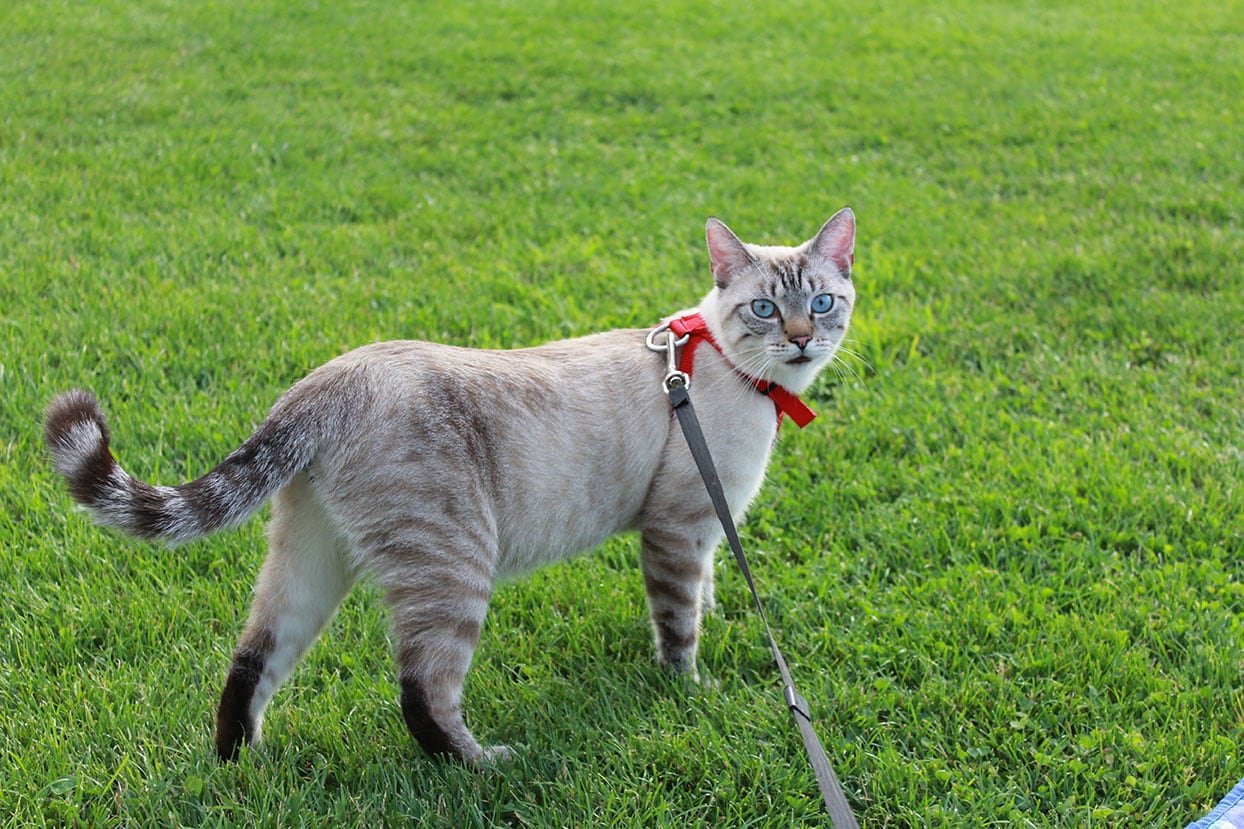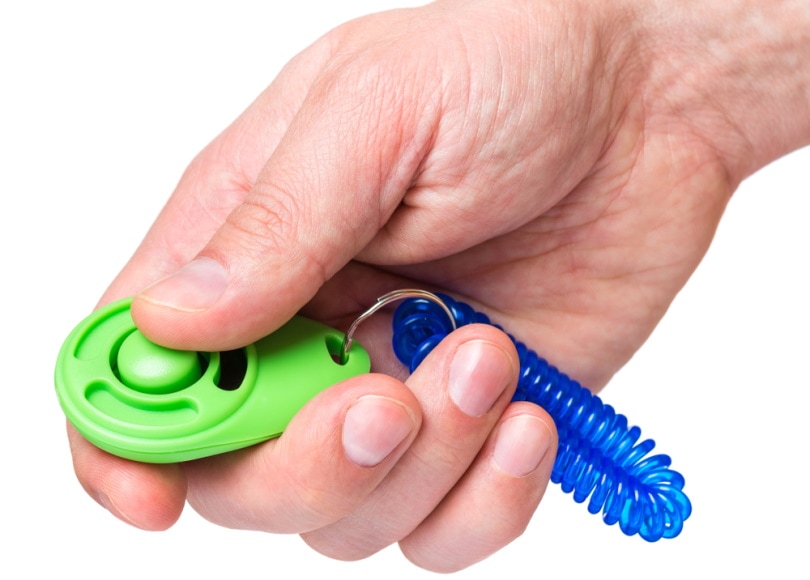
[ad_1]

Siamese cats are known for their unique beauty, affectionate natures, and gigantic personalities. These smart cats are pros at getting what they want and won’t hesitate to tell you if they’re happy or not happy about something— they’re one of the chattiest cat breeds you’ll ever meet.
The good news is that, though Siamese cats can be headstrong and somewhat demanding, they’re also highly intelligent, which makes them easy to train and quick to learn. Training is important for all cats, but especially Siamese cats because they can become destructive if they lack boundaries and routines, or are feeling stressed.
Training also helps set expectations, and this makes your Siamese feel more confident, happy, and less stressed in their daily lives. Once they know what’s what, cats take a lot of comfort in little routines like eating around the same time every day and using the litter box in the same place every day, however insignificant these things may seem to us.
If you’ve recently acquired one of these gorgeous chatty kitties or are thinking of doing so, we hope that these Siamese training tips will point you in the right direction.

The 10 Tips on How to Train a Siamese Cat
1. Start Young (if Possible)

When it comes to training and socializing your Siamese, it’s best to start as early as possible, as kittens are like little sponges and their brains are still quite malleable. However, nowadays, more and more people are choosing to adopt adult cats (hooray!), so we know that starting training young isn’t always possible.
Fortunately, adult cats are still receptive to training, so don’t worry if your recently-adopted adult cat needs a little brush up on their manners!
2. Use Positive Reinforcement

The best way to train cats is to get them to associate certain behaviors with positive results. This means arming yourself with a pack (or a few packs) of your cat’s favorite treats to be offered as rewards when they do something right (within reason of course—we don’t want them to end up chunkier than planned!).
You can pair the treats with a clicker. Press the clicker before you reward your Siamese with a treat to teach them that the sound is associated with something positive.
Even seemingly small things count. For example, if you’re training your Siamese to use the litter box and they go over and sniff at the box, reward them with a treat. The simple fact that your cat showed interest in the box is a step in the right direction. Keep encouraging them, and never use force or punishments to get your Siamese to do something.
3. Respond Quickly

Avoid leaving too much time between the moment your Siamese does something well and giving the treat. You’ll get better results if you respond quickly as this prevents the learning moment from passing your cat by.
4. Train in Short Spurts

We don’t want to overwhelm the cat with super long sessions as this could lead to them getting stressed or losing interest. A good rule of thumb is to avoid going past the 15-minute mark.
5. Train Before You Feed

When you eat a meal, do you feel like studying or exercising just after? Most likely you just want to sit and chill out for a while, and your cat is no different. Training is more effective in the minutes prior to your Siamese’s feeding time.
6. Use Your Voice
Your voice is one of the most powerful training tools there is. It can be used to give praise when your Siamese is behaving in the way you want them to, but it can also be used to demonstrate firmness. It’s a good idea to choose a short, sharp sound like “Eep!” or Bam!” to use when your cat is displaying unsavory behaviors like scratching the couch.
Avoid words you use all the time like “no” because your cat won’t understand that you’re saying it to stop them from doing something—rather, they’ll just understand it as a regular thing you say with no meaning. You can also use your voice to teach basic commands like “Come!” or to get your cat to respond to their name.
7. Ignore Bad Behavior

If using a short, sharp sound when discouraging bad behavior like scratching to get your attention just isn’t cutting it, some believe ignoring the cat is best as it teaches them not to expect a reaction from you.
That said, we know this isn’t always feasible when your brand-new couch is being ripped to shreds before your very eyes. You could try giving it a shot, though, and you can always try restricting access to the area your Siamese likes to scratch if all else fails.
8. Be Consistent

Consistency is key when training your Siamese to reinforce positive habits. Stick with the same verbal cues you always use and do training sessions at the same time every day until your cat starts to catch on. If you just do a bit of training here and there with no routine, it can unravel the progress your cat has made.
9. Don’t Use Your Hands as a Toy

When training your Siamese to play with toys, never use your hand as one. If you let your cat pounce on and bite your hand playfully as a kitten when it doesn’t really hurt, they’ll do the same thing as adults and then, it most certainly will hurt.
10. Keep Calm and Give It Time

As smart as Siamese cats are it doesn’t mean you can just show them something one or two times and they’ll get it. Even if they do, the behaviors you teach them require regular reinforcement to make sure the effectiveness doesn’t wear off.
Always introduce new objects like litter boxes, crates, brushes, toothbrushes, and nail clippers gradually and if your cat doesn’t tolerate them or shows fear, leave it be for the moment and come back to it another time.
On a final note—don’t be disheartened if your Siamese doesn’t seem to be “getting it”. There’s no set time frame by which they should have learned how to do everything just right. As long as you’re being consistent, your efforts will start to pay off. If you’re having difficulty with training and need support, there’s the option of contacting a pet behavioralist or your vet for advice.

What Should I Be Training My Cat to Do?
If you’re new to cat parenting, it can be a little tricky to know exactly what they should be trained to do. To sum up, cats should ideally be trained to:

Use a litter box
Come when called
Play with toys
Accept toothbrushing, nail clipping, and brushing
Get into a cat carrier on their own
Get used to other pets
Get used to humans

Conclusion
Training is a crucial part of your Siamese kitten or adult cat’s development that offers them structure, boundaries, and routine—something all cats need to be comfortable and happy.
To reiterate, there’s nothing wrong with checking in with your vet or a professional pet trainer if you’re finding the going tough. If your cat is consistently frightened or stressed out during training or otherwise, your vet may want to give them a checkup for anxiety¹ or behavioral issues.
Featured Image Credit: Hanna and the world, Shutterstock
[ad_2]
Source link

